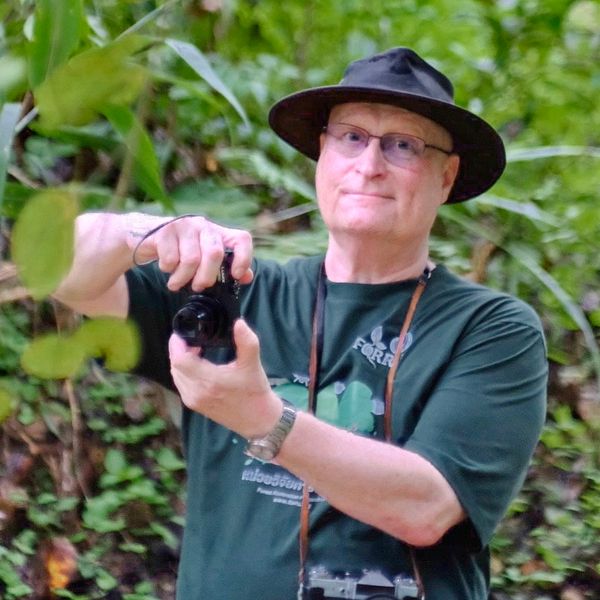I first met Nunie shortly after arriving in Chiang Mai, to teach ecology in Chiang Mai University’s Biology Department, in 1986. The occasion was a seminar in the Faculty of Humanities on natural resources management. A diminutive Thai lady was talking in perfect Queen’s English about a project near Chom Thong to restore forests to the upper watershed of the Mae Soi Valley. Here was someone who dared to believe that deforestation, with its disastrous consequences for watersheds and wildlife, was actually reversible. Co-founding the Dhammanaat Foundation with Pra Acharn Pongsak, Nunie was pioneering the restoration of natural forest ecosystems by planting mixtures of indigenous forest trees, when other agencies could not think beyond plantations of pines and eucalyptus. Nunie was totally convincing; this was the first truly practical ecological project I had come across, since arriving in Thailand. I was hooked and wanted to get involved.
Nunie always seemed a little insecure about having no formal academic training in natural sciences. But she more than made up for that with her unceasing enthusiasm for the natural world and a diligence that put students half her age to shame. Working with botanist, J. F. Maxwell (Max), she learnt to recognize most of the plant species in the Mae Soi watershed and around her house on Doi Suthep. That knowledge was put to good use. Seeds were collected, and the Dhammanaat Foundation’s tree nurseries filled with more and more tree species for planting in the watershed.

It is no exaggeration to say that Nunie provided both Kate and I with inspiration that strongly influenced the subsequent directions of our lives. After her internship with the Dhammanaat Foundation, Kate went on to complete a PhD on forest regeneration, whilst I focussed my attention on the technical issues of forest restoration. Most of the problems Nunie encountered, in trying to restore forest in the Mae Soi Valley arose from a dearth of ecological information about Thailand’s tree species. When could seeds be collected? How could seedlings be grown in nurseries? Which species should be planted where? Nunie encouraged me to set up a research nursery to investigate these questions. She introduced me to horticulturalist, Dr. David Blakesley of Bath University, UK, with whom I would develop a successful academic partnership, which continues to this day. Together with Kate and Acharn Vilaiwan Anusarnsunthorn (my colleague at CMU), we began to plan what was to become Chiang Mai University’s Forest Restoration Research Unit (FORRU-CMU).
Nunie was instrumental in helping us to get FORRU-CMU off the ground. After more than a year of failing to convince aid agencies to fund such an initiative, I was invited over for tea and biscuits in the front garden of Nunie’s house in the compound of Wat Palaad. There, she introduced me to Mark Graham, who, acting on behalf of Richmond (Bangkok) Ltd., was looking for environmental projects for sponsorship by the company’s social fund. A few weeks later, I had the money needed to start building FORRU-CMU’s research nursery. Nunie even designed the unit’s logo.


I met her only a couple of times after the conference. Although her health was failing, her enthusiasm for life was the same as ever. I could not imagine that those would be the last times we would share a pot of tea. I shall miss her friendship and unwavering encouragement, her stimulating conversations and her insatiable curiosity during walks in the forest. But more importantly, the natural world has lost one of its most ardent defenders and is the more vulnerable for her passing.


